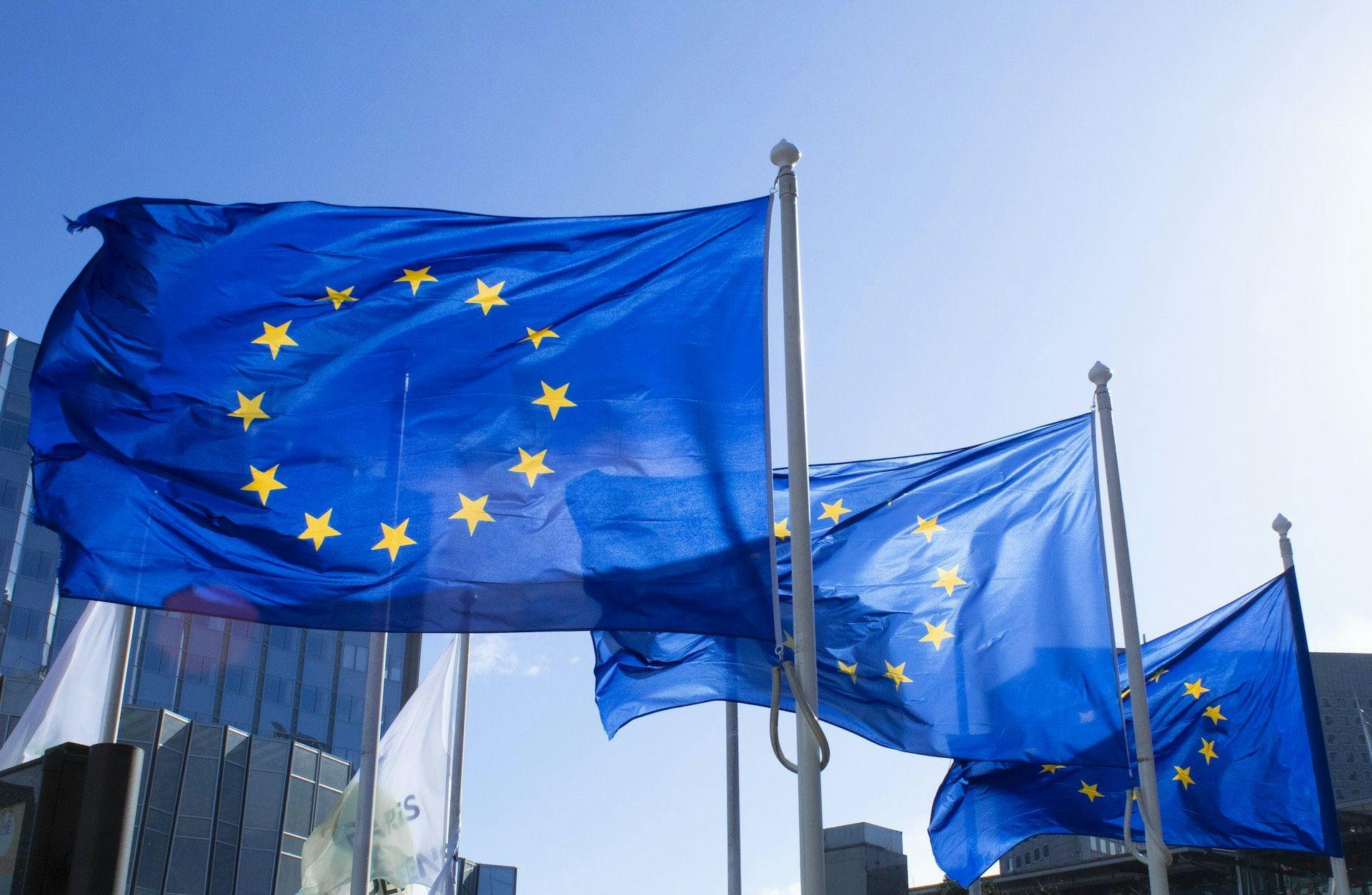10 principles for an ambitious corporate climate strategy
hese ten principles result from collective work carried out between September 2021 and June 2022, as part of the Net Zero Initiative project, in collaboration with the ADEME and thirty professionals working on climate change.
Their purpose is to define the foundations of an ambitious and rigorous corporate climate strategy, in line with climate science and the Paris Agreement goals.
The signatories call for all organisations, whatever their size and sector, to implement these principles to build a climate strategy that matches the challenges to be overcome.
The 10 principles in detail
General approach
01. The notion of net zero refers primarily to the global balance between GHG emissions and carbon sinks.
The main goal of climate action is to limit warming to the target temperature set out in the Paris Agreement, by immediately mobilising the resources to collectively attain net zero GHG emissions at the global level during the second half of the century.
This international policy goal is based on the scientific recommendations of the IPCC. It requires the drastic reduction of GHG emissions, and in parallel the preservation of existing carbon sinks and the rapid development of natural and (in certain scenarios) artificial carbon sinks.
02. For a company, having a net zero strategy means wanting to carry out the transformations needed to reach global carbon neutrality by 2050.
A corporate climate strategy must aim at making the company's activities compatible with a world of net zero emission by 2050, and contributing at the just level to reach this objective of global net zero emissions through different paths of action.
The activity of the company must take place within the global context recalled in principle 1.
The climate strategy of a company must be considered as the just share of effort to be made in building a global net zero system. The perimeter and the "just levels of contribution” are set out in principles 5, 6, 8 and 9.
In particular, the company's entire strategy must be consistent with this principle. The company's financial strategy must not contradict its climate strategy.
03. To organise their climate action, companies must distinguish three different types of action that are non-fungible:
reduction, avoidance, removal.
A company has three levers by which it can organise its climate strategy: reduce the emissions of its value chain, help others to reduce their emissions, and develop carbon sinks. These levers must be assessed, objectivised, managed and reported separately.
The company must:
- Pillar A/ Reduce its direct and indirect emissions (scope 1+2+3) to the levels required by decarbonation scenarios compatible with the Paris Agreement.
- Pillar B/ Contribute to reducing emissions in society, through either the sales of products and services that decarbonize, or the financing of GHG avoidance projects outside its value chain.
- Pillar C/ Preserve and develop carbon sinks in and outside its value chain.
These three levers act in synergy and cannot be added or subtracted, and all three must be activated at the just level of contribution.
Methods of measuring direct and indirect emissions, avoided emissions and carbon capture, as well as the “just” levels of contribution, are set out in principles 5, 8 and 9.
Emissions reductions
04. The priority objective of companies must be to reduce their emissions.
For most of their activities, reduction at the right level and speed of direct and Indirect emissions must be an absolute priority of a company's climate strategy.
In the general case, Pillar A (reducing the carbon emissions of companies) takes priority in relation to the two other paths of action, namely contribution to reducing emissions of others (Pillar B) and the development of carbon sinks (Pillar C).
The method of defining the "right level" and the "right speed", i.e. the relevant GHG emission reduction trajectory for the company, is set out in principle 6.
Direct and indirect emissions are the emissions of scopes 1, 2 et 3.
Some companies sell products and services related to low-carbon transition which allows the rest of the economy to reduce its emissions. In the general interest, it might be desirable for them to expand their activity regarding these specific products and services, even if this development results in an increase in emissions. This point is under discussion within the Net Zero Initiative project. It remains certain however that this type of exemption can only be allowed at the scale of a particular product or service and not for the entire range of products of a company.
05. Companies must assess and communicate on all the emissions of their value chain.
The assessment of the company's GHG footprint must cover at least all the direct and significant indirect emissions.
In conformity with the rules of ISO 14064-1:2018 and the Carbon Balance, the company must quantify and report all the significant emissions of its activity, whether direct or indirect (scopes 1, 2 and 3). The accounting perimeter is its organisational and operational perimeter. The significant emissions for which the company esteems that it does not have a lever should nonetheless be included in the assessment.
The direct and indirect emissions must also include those linked to the land sector (forests, soils).
06. The emission reduction goals must be consistent with climate science.
Companies are faced with the inevitable and urgent need to set reduction goals for their carbon footprint. For a credible climate strategy, these objectives must be consistent with 1.5° or well below 2°C carbon budgets. These goals must be specified for medium and long-term time frames.
To define its reduction goals, the company can rely on the recommendations of reference frameworks and scenarios.
The scenarios on which the company will build its emission reduction strategy can be:
- International scenarios: The SBTi requires following a 1.5°C reduction pathway for scope 1-2 emissions, and at least a well below 2°C for short-term goals of scope 3 emissions.
- Regional and national scenarios, for example Europe’s climate neutrality plan and the French SNBC (National Low Carbon Strategy).
- Scenario analyses carried out by the company regarding 1.5°C or well-below 2°C scenarios.
By way of information, the mitigation efforts expected at the global level require a reduction of 5% to 7% in emissions per year.
Companies are not necessarily bound to apply these figures as such to ensure compatibility with the Paris Agreement, since the efforts to be made depend on the sector and nature of the company. Nonetheless, the order of magnitude of the reductions expected at the global scale provide an idea of the magnitude of the emission reductions to be implemented, and illustrate the need to significantly rethink the business models of companies to take up the climate challenge.
The trajectory must define the goals for several timeframes: the medium term (5 to 10 years) and the long term (more than 20 years) consistent with the time scales of the activity.
Lastly, regarding the specific cases of companies selling decarbonising products and services, see principle 4.
07. In addition to making commitments, it is urgent for companies to obtain concrete and rapid results on reducing their emissions.
A climate strategy only has value if it leads to real reductions of the company's GHG emissions, in line with the trajectory pursued. To achieve this, it is vital to define a company transformation plan that must be followed and managed dynamically. Companies must give themselves the means to achieve their ambitions.
Measuring emissions and defining a trajectory are pointless if they are not followed by the implementation of concrete actions to achieve the absolute reduction of emissions, providing tangible results and in line with the targets set.
To achieve this, it is vital to define an action plan, i.e., a list of initiatives, prioritised and scheduled through time that must be deployed in the company to generate emission reductions in its value chain. Those initiatives cannot be limited to step-by-step improvements of the company's processes. To provide the expected level of emission reductions, there is no other way but to transform business models, reorient investments and rethink the company's strategy. To this end, the company must carry out scenario analyses to help it rethink its activity and make it compatible with a net zero planet.
The reduction of the company's GHG footprint must be monitored and managed dynamically at the highest level of the organisation.
To build a full action plan, the company can rely on sectoral references such as ADEME's international initiative ACT – Assessing low Carbon Transition, to ensure consistency between the actions carried out and the reduction targets.
Lastly, regarding the specific cases of companies selling decarbonising products and services or compatible with 1.5°C, see principle 4.
Positive contributions
08. Companies must contribute to the decarbonization of their ecosystem as much as possible, through the generation of avoided emissions.
Further to their action to reduce their value chain emissions, companies are encouraged to contribute to decarbonation beyond the scope of their carbon footprint, on the one hand by developing a range of products and services that decarbonize their clients, and on the other hand, by financing additional emission reductions outside their value chain.
In addition to working to reduce their emissions, which remains the priority in most cases, companies are encouraged to contribute towards decarbonising the economy in general by generating emission reductions beyond the scope of their carbon footprint, quantified as “avoided emissions”. This can be done by using two main levers:
- Emissions avoided by products and services: the company sells 1.5°C-compatible low carbon solutions that reduce their clients’ carbon footprint.
- Emissions avoided by financial contribution outside the value chain: the company generates additional avoided emissions through the financing of certified projects on the voluntary market, or through any other scheme that enables avoiding emissions according to a rigorous method recognised by reference institutions (e.g., Gold Standard, Verra methodologies, etc.).
The first lever must be considered as having priority in comparison to the second, since the company’s portfolio of solutions is directly linked to its business strategy and risk exposure.
Generating avoided emissions is different from the company's carbon footprint. One cannot be subtracted from the other.
Avoided emissions by the company's solutions should be distinguished from the reduction of Scope 3.11 - “Use of sold products":
- The company can very well increase its scope 3 while generating increasing amounts of avoided emissions (case in which the company increases the sales of its decarbonising products);
- On the contrary, scope 3 can very well decrease without however generating avoided emissions (case in which the company decreases the sales of carbon-intensive products that do not avoid emissions).
Avoided emissions quantify the impact of a solution on the decarbonization of society, whereas a reduction in scope 3 emissions quantifies a decrease in the company’s emissions.
As with the reduction of the carbon footprint, the company must adopt a three-step approach for its action related to avoided emissions:
- Assessment: use a rigorous and recognised method for the annual assessment of avoided emissions generated inside and outside the value chain. A standardisation of this calculation was proposed In June 2022 by the Net Zero Initiative project.
- Targets: set quantitative targets for generating avoided emissions, that must reflect the just level of action of the company to achieve global net zero. Such methodological work is in progress within the Net Zero Initiative project.
- Action plan: set up an action plan to reach those targets, manage them dynamically, monitor them and report the results.
Regarding financing actions outside the value chain, specific attention must be given to the quality of the projects financed, especially to ensure the reality of their carbon contribution (in particular, the rigour of the quantification, uniqueness, additionality), as well as to the social and environmental impacts beyond carbon, in particular in favour of developing countries. The use of recognised standards (Gold Standard, VCS, etc.) is encouraged. Furthermore, companies shall be transparent on the volume of financing allocated to projects outside the value chain and, if relevant, on the volume of CO2 avoided.
This action must be carried out in parallel with that of carbon sinks described in principle 9, and that of emission reduction described in principles 4 to 7.
09. Companies must develop carbon sinks at the just level.
In addition to their action to reduce their value chain emissions and contribute to the decarbonation of society (emission avoidance), companies are encouraged to contribute at the just level to the sustainable capture of CO2 in carbon sinks, by acting in priority within their value chains.
In addition to working to reduce their emissions (which remains the priority) and avoiding emissions, companies are encouraged to contribute to the sustainable capture of CO2 in carbon sinks:
- In their value chain: in natural carbon sinks (soils, forests) and technological sinks (BECCS, DACCS, etc.), owned by the company or present in the value chain;
- Outside their value chain: via the purchase of certified carbon credits, or other schemes for financing carbon removals according to a rigorous method recognised by reference institutions (e.g., Gold Standard, Verra, etc.).
Carbon sinks in the value chain must be considered as having priority outside the value chain, since they are directly linked to the company's scope of responsibility.
As with the reduction of the carbon footprint, the company must adopt a three-step approach for its action relating to carbon removal:
- Assessment: use a rigorous and recognised method for the annual assessment of carbon removals generated inside and outside the value chain, by applying recognised standards (in particular the GHG Protocol on Removals by the WRI, whose release is scheduled for the end of 2022).
- Targets: set quantitative carbon removals targets that must reflect the just level of action of the company in its contribution to global net zero, by distinguishing a specific sub-target for removals inside the value chain.
- Action plan: set up an action plan to reach the targets determined, manage them dynamically, monitor them and report the results.
For projects outside the value chain, special attention must be given to the quality of the initiatives financed, notably to guarantee the robustness of their carbon contribution (quantification, uniqueness, permanence, additionality, etc.), as well as to the social and environmental impacts beyond carbon, in particular in favour of developing countries. The use of recognised standards (Gold Standard, VCS, etc.) is encouraged. Furthermore, companies shall be transparent on the volume of financing allocated to projects outside the value chain and, if relevant, on the volume of CO2 removed.
Carbon sinks are distinguished according to their type and level of permanence.
This action must be carried out in parallel with that of avoided emissions described in principle 8, and that of emission reductions described in principles 4 to 7.
Communication
10. If companies wish to communicate on their climate strategy, it must be done with rigour and irreproachably.
Companies are invited to communicate transparently and sincerely on their climate strategy, by placing emphasis on their concrete results, and by using indicators and elements of language that contribute to promoting a rigorous approach to climate change.
Through concern for transparency, and to highlight the progress achieved, companies are encouraged to communicate internally and externally on the content and outcomes of their climate strategies.
The dashboard of the Net Zero Initiative provides a relevant reporting framework.
Companies are invited to go further than a declaration of intent and targets, by placing emphasis on the results delivered.
Communicating quantitative indicators requires:
- specifying the methodology used for the quantification, and using a reference methodology (e.g., ISO 14064-1:2018, GHG Protocol, Bilan Carbone…);
- specifying the perimeters (spatial, temporal, organisational) and the main hypotheses;
- indicating the contextual elements required to understand the figures communicated (e.g., targets set, sectoral averages, significant events).
Furthermore, the company must take care to use formulations that faithfully mirror the reality of the results and promote a rigorous approach to the climate challenge. In particular, in conformity with the opinion of ADEME on carbon neutrality, and its experts' opinions on the use of the “Carbon neutrality” argument in communications, we strongly advise against the company making allegations of carbon neutrality regarding its products, services and events. We also advise against the notion of “carbon offset”. Instead, the company is invited to place emphasis on its contribution to global and collective carbon neutrality through its alignment with the reference trajectories of climate change mitigation, with the three indicators, namely reduction, avoidance and removal.
Communicating can also be the opportunity for highlighting the co-benefits provided by setting up the climate strategy (e.g., social, biodiversity, resilience, etc.)
Glossary
| Additionality | Funding a mitigation action (reduction, avoidance, carbon capture) is additional when the action in question cannot be implemented without this funding, for economic and operational reasons. |
| BECCS | Bio-Energy with Carbon Capture and Storage |
| Value chain | All the actors up and downstream of the company's activity and necessary for it to take place: suppliers, transporters, distributors, clients, etc. |
| DACCS | Direct Air Carbon Capture and Storage |
| Decarbonation | Absolute reduction of the company's direct and indirect emissions (pillar A). |
| Avoided emissions | Generation of emission reductions in comparison to a counterfactual reference scenario, outside the perimeter of the company’s carbon footprint. |
| Significant emissions | Emissions representing the majority of the company's total emissions. Annex H of ISO 14064-1:2018 specifies a list of potential criteria for assessing the significance of indirect emissions, in addition to the magnitude/relative share criterion of emissions (which must be included by default):
For example, the Science-based Targets Initiative requires companies committed to SBT to include in their reduction perimeter all their significant emissions which they define as follows:
|
| GHG | Greenhouse gas: all gases that contribute to intensifying the greenhouse effect, thus climate change. The main GHGs are: CO2 (carbon dioxide), CH4 (methane), and N2O (nitrous oxide). |
| Just level of contribution | For a given challenge, the theoretical level corresponding to the relative share of collective effort that should, ideally, be allocated to an actor as a function of their responsibility in the challenge and their capacity to address it efficiently. |
| Net zero / Net zero emission | Equilibrium situation at the level of the planet or a country, between two physical flows: greenhouse gas emissions (expressed in tCO2e) on the one hand, and CO2 removals on the other. |
| Neutralisation | In the vocabulary of the SBTi's Net-Zero Standard, all the actions relating to carbon capture (pillar C of the NZI) for a quantity of CO2 equivalent to the residual emissions of the company in 2050, according to a reduction pathway of 1.5°C. |
| Carbon neutrality | See “Net zero” |
| Perimeter | Boundaries defined for calculating an indicator or planning an action.
|
| Permanence | For carbon capture: assurance that a ton of CO2 is captured sustainably, and that it will not be released into the atmosphere in the medium term due to, for example, a forest fire or anthropogenic deforestation. |
| CO2 capture | Storage - permanent or very long term - in carbon sinks (products with very long lifetimes, stable ecosystems, geological wells) - of CO2 of atmospheric origin, either by natural processes (plant growth, decomposition of organic matter), or by technological processes (direct capture of carbon, transformation of biomass). |
| Uniqueness | For an emission reduction or carbon capture: the fact that it is accounted for only once. |
Contact us
Contact us about any question you have about Carbone 4, or for a request for specific assistance.


















